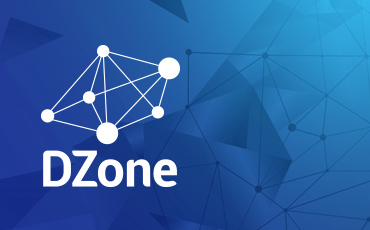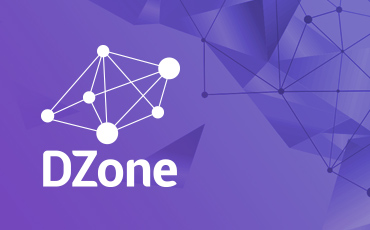Top 24 Java-Based Content Management Systems
CMS, or content management systems, are platforms for managing and administering website content. There is no denying that CMSes are important in today's web ecosystem. These content management systems not only provide an easy way to build and maintain websites, but they also lend a helping hand in updating and editing website content without the need to spend hours or days writing and altering codes and scripts. Some of the leading CMSes are PHP-based, Ruby on Rails-based, ASP.NET-based, and Java-based. Among these, due to scalability, modernized architecture and open-source standards of a few, Java-based CMSs are getting quite a lot of attention lately, especially for enterprise websites, because of the scalable, modern, open source technology behind most of them. There are plenty of CMS tools based on Java to help developers create multi-lingual and multi-channel websites. But how do we decide on the best one for our use case? In this article, we’re going to explore the top 24 content management systems based on Java. Let’s have a look at each of them in detail: 1. Alfresco : Alfresco is one of the top open-source content management systems of Java. It comes with enterprise repository and portlet capabilities along with document management, collaboration, records management, knowledge management, web content management, imaging, and a lot more. Alfresco has a modular architecture and enables end users to efficiently manage websites across the cloud, mobile, hybrid and on-premise environments using open source Java technologies, such as Spring, Hibernate, Lucene and JSF. 2. Magnolia : Magnolia is a well-documented, easy to use, enterprise-grade open source CMS based on the Java Content Repository Standard. It is a highly popular CMS due to its out-of-the-box functionality and ease of use under an open source license. Moreover, Magnolia supports unique content delivery capabilities in a search-engine optimized manner and also follows W3C standards. Magnolia CMS has been deployed by enterprises and governments in more than 100 countries across the world. Here's a case study on Magnolia-based website development 3. LogicalDOC : Though less known than other software such as Alfresco, LogicalDOC is emerging as a powerful and more affordable alternative. With primary focus on Document Management, it offers very interesting content management, knowledge management and collaboration features, and all this in a really efficient way. A peculiar aspect of the interface is the use of Google GWT , this makes the user interface very responsive while the data transfer with the server is minimum. Also the availability of Free Apps for Android and Apple devices (iPhone and iPad) is an interesting feature. 4. Asbru: Asbru is another powerful, fully-featured, easy to use content management system with database-driven capabilities. It is built on the Spring framework with integrated community, databases, eCommerce and statistics modules, which helps developers to create, publish and manage rich and user-friendly internet, extranet and intranet websites on the go. Available in various editions, Asbru provides users with a simple, user-friendly platform to manage websites along with a host of other benefits and features such as custom templates and data, password protected content, multi-lingual content, communities, eCommerce and website analytics, a cutting-edge WYSIWYG content editor and a lot more. 5. OpenCMS : OpenCMS is based on Java and XML technology that allows you to build highly customizable and interactive websites and portals. It comes integrated with a WYSIWYG editor and fully-featured Template Engine which is fully compliant with W3C standards. OpenCMS can be deployed both in an open-source environment (Linux, Apache, Tomcat, MySQL) as well as a commercial environment (Windows NT, IIS, BEA Weblogic, Oracle) 6. Walrus: Walrus is yet another Spring-based CMS that provides unique and effective content management capabilities with a smart administrative interface and drag-and-drop facilities. Easy-to-setup and undo/redo features make Walrus a highly preferred and suitable CMS for government and non-profit enterprises. 7. Pulse : Pulse is a Java-based framework and portal solution that offers easy-to-use and extensible patterns for creating rich browser web applications and responsive websites. It brings a bunch of innovative and powerful components including content management, web shops, user management and more. A few of its key features include a WebDAV based virtual file system for digital asset management, mature user and role management, built-in internationalization, and more. 8. MeshCMS: MeshCMS is an easy to use online editing system written in Java. It comes with a host of features that you will find in any ideal content management system however, it uses a conventional approach in managing and editing website content. It is considered one of the fastest CMSes for editing files online, managing files, and building some very common components like menus, breadcrumbs, mail forms and so on. MeshCMS is accompanied by cross-browser capabilities, a WYSIWYG editor, hot-linking prevention, and tag-library that makes content management an interesting affair. 9. Liferay: Liferay is one of the most popular CMSes based on Java, and is recommended by many industry experts. It comes with awesome features that can make your content management tasks simple. Liferay is a very popular for developing personal as well as professional websites with ease. 10. DotCMS: DotCMS is a next-gen enterprise CMS that wears an open-source hat. It is highly popular and widely used CMS due to its open APIs, extensible and scalable architecture that it used to create personalized and engaging websites, intranets, extranets and applications with ease. 11. Jease: Jease highly known as ‘Java with ease’ is another open source content management system that is built on popular Java technologies like db40, Perst, Lucence and ZK. It is an extremely lightweight CMS with excellent Ajax interface. Due to its intuitive and interactive interface, it is highly simple and easy to customize and deploy websites in Jease even for inexperienced Java developers. 12. Hippo: Hippo is again a powerful open-source CMS made in Java that features enterprise level capabilities that helps in delivering personalized websites and channels. Hippo outlines its competitor by delivering outstanding customer experience through innovative solutions. Hippo has come a long way since 1999 serving medium to large organizations by offering a personalized multichannel content distribution platform including website, mobile, tablet, extranets and intranets. Its major version update was in December 2012 and since then it is seeing minor updates every couple of months. 13. Apache Lenya: Apache Lenya is another open-source Java CMS that features revision control , multisite management, scheduling, search, WYSIWYG editors, and workflow which makes website development and management quite interesting and easy for developers. Available in a variety of languages, Apache Lenya is highly preferred CMS among enterprises that desire to develop multi-lingual websites. 14. Contelligent: Conteligent is another smart CMS solution offered under Java technology stack. It is fully compliant with J2EE and offers great solution for creating and managing personalized websites. 15. InfoGlue: InfoGlue again is a Java-based CMS that is known for its advanced, scalable and robust open-source architecture. It is a highly flexible CMS built on JSR-168 and comes with full multi-language support, excellent information reuse and high integration capabilities. 16. OpenEdit: OpenEdit CMS is a dynamic tool for managing website content with online editing capabilities. Built in open-source architecture, OpenEdit provides facilities like user manager, file manager, version control and notification tools for managing media-rich websites. OpenCMS features enterprise grade plugins such as eCommerce, Content Management, Blog, Events Calendar, Social Networking Tools and more. 17. AtLeap: Atleap is a multi-lingual CMS based on Java which offers amazing content delivery assistance with SEO and full text search functionalities. AtLeap, a product of Blandware, is not only a CMS but a highly robust framework for developing website and web applications 18. Weceem: Weceem is yet another open source content management system, unlikely other CMS it is built upon well-known Java framework grails, spring and Java itself. Weceem has garner positive reviews and is an ideal CMS when it comes to grails, but faces tough competition in best Java CMS category. I came across a LinkedIn discussion which was enough for me to put this CMS in the Best Java CMS list. 19. Nuxeo: Nuxeno is a powerful open source CMS built on Java-based architecture. It offers solutions related to document management, case management and digital asset management. It is free from licensing free but do costs you when reach out for support and maintenance help. It has strong groups of customers including Electronic Arts, U.S. Navy and as stated on the company website, it’s been used in over 145 countries across thousands of organizations. 20. XperienCentral: Xperien central is currently the only CMS that offers unique content to a visitor as per his earlier journey, so you can tailor the content to increase the conversion. It offers multi-channel content delivery across website, mobile social media channels and applications. It is built on Java and hence it is extremely scalable and agile. 21 Atex: Atex is a web CMS that uses polopoly technology to deliver content. As per claims, it is the only industry leading CMS with built in paywall. Atex again is one of the premium CMS that offers amazing solutions for managing websites and helps marketers deliver the right content to relevant audiences. It has rich set of clientele. 22 Escenic: Customers of escenic include News of the World, The Sun, The Times, the Independent titles. It’s a closed source Java framework. Both Atex and Escenic are found to be highly popular in Sweden. Some of the biggest sites in Sweden use both these CMS. idg.se uses Atex and Aftonbladet.se uses Escenic 23. Adobe Experience Manager/ CQ5 : Best CMS list cannot be completed without including adobe experience manager. It is an all-round CMS which offers all kinds of agility and flexibility an organization may want. It helps deliver unique customer experience by delivering different content on different channels. Adobe Experience Manager was recently named a leader in web content management by Garnters magic quadrant. Earlier it was known as CQ5 but later was acquire by Adobe in 2010 24. SDL Tridion Again a well known CMS and highly recommended by industry experts. Its simple intuitive UI makes it simple to manage the content and deliver it uniformly across all channels. It recently received top score in overall content management experience according to an independent research firm - Forrester Research, Inc., This completes the list 23 top Java-based content management system. Hope after reading about all the CMS, you have got enough inferences and insight as to which CMS would be best for your website development project.
December 9, 2013
by Boni Satani
·
326,685 Views
·
4 Likes













